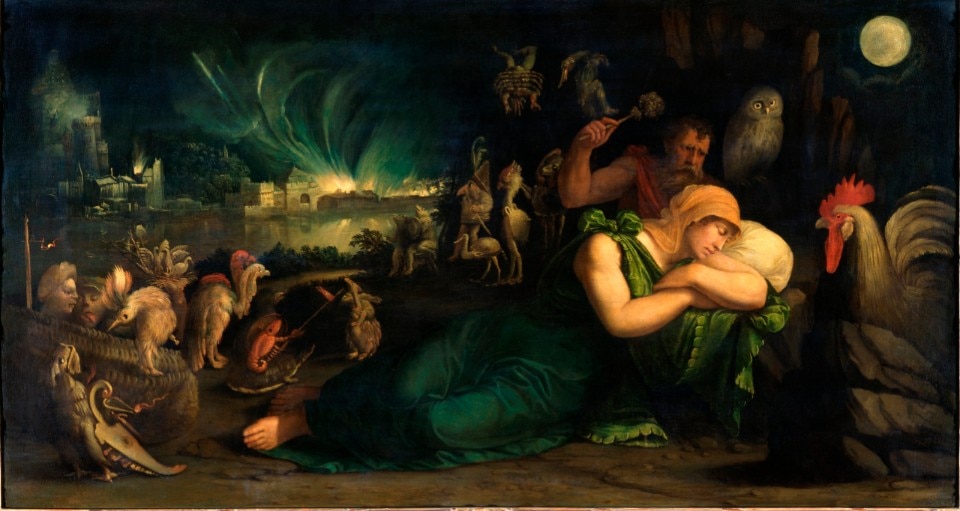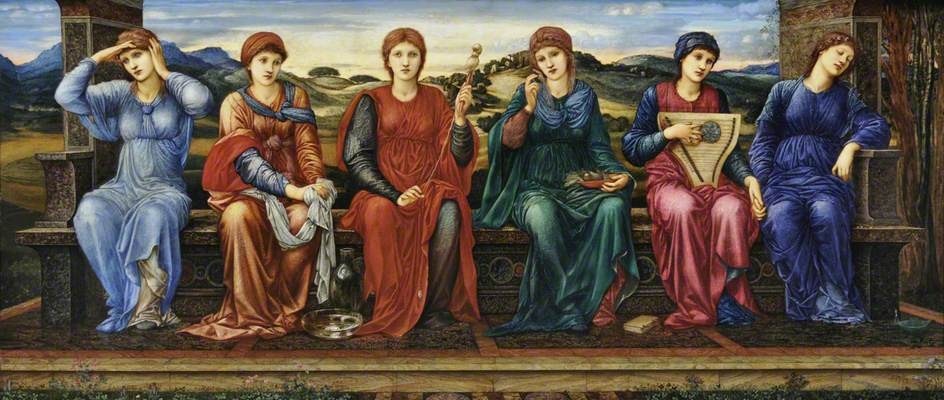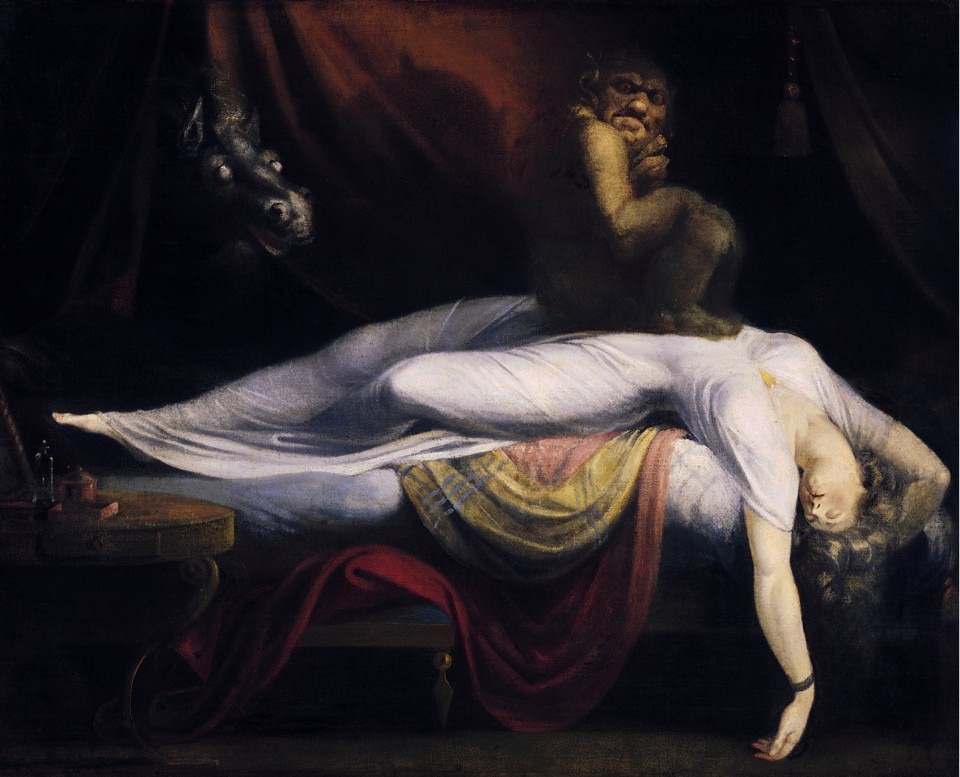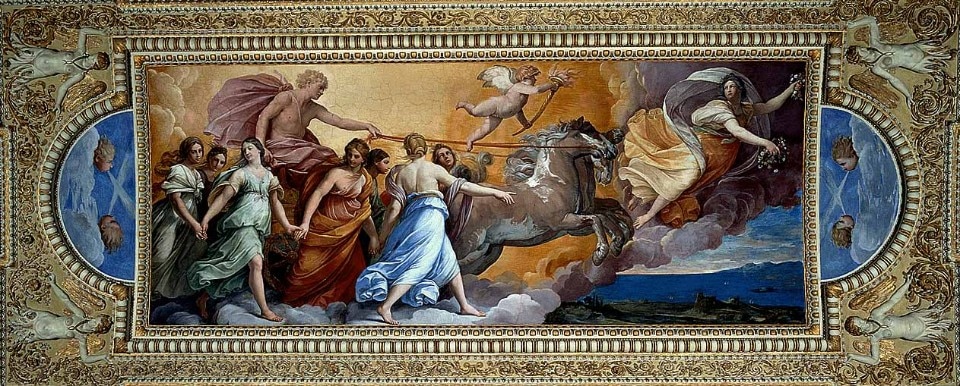Long, slow, endless days. Always the same, spent in the dark peace of our homes, lying on the suspended comfort of our sofa, tired, frightened and alone. Alone with our ego and with the thought of what is yet to come, a thought that during those days, the hot days of the pandemic, seemed even more mysterious and incomprehensible than usual.
Since the dawn of civilization, humans have kept their time by dividing it in a variable number of days, a symbolic-numeric scansion based on astrology and on the influence of the planets on earth. In the Iliad, the Horai, described as a personification of the humidity of the sky and cosmic forces, marked the rhythm of human activities. In the Genesis, the world begins with and alternation of night and day. Six moments, to which the Creator then added one more: Sunday, “the Lord’s day”, a day of rest.

Just like literature, art interprets the day and its phases in its very own way. The most famous representation of all is probably that of Michelangelo, in the New Sacristy of San Lorenzo in Florence, where he divides the days in different parts and represents them with magnificent sculptures: Dawn, Day, Dusk and Night. They are represented in an allegorical way, placed in a median band between an underground world, represented by the infernal rivers, and the celestial world, represented in the upper lunettes with the planets. Erwin Panofsky, in his Studies in Iconology, stresses how this intermediate position reflects the function of drawing the destructive power of time within the sublunary world. On the vault of the large central hall of Palazzo Rospigliosi Pallavicini, Guido Reni paints “L’Aurora”: in a dim-lit landscape, Aurora is wrapped in a golden dress and is scattering flowers in the air, chasing the darkness away. Next to her is Phosphorus, the first star of the morning, while Apollo, on his chariot pulled by four horses, indicates the degrees of light that precede the arrival of the Sun. He’s leading everyone, and sits on his quadriga surrounded by the Horai, wearing a wide and swirling cloak that manifests his race and at the same time proclaims him as the protagonist of a scene that ends in a drape of clouds, which like a scenery flat descend into the blue of the night: “Wrapped in purple robes, Phoebus was sitting on a throne sparkling with bright emeralds. To his right and left stood Day, Month, and Year, Ages and Hours, spaced equally apart”. (Ovid, Metamorphosis)

In the middle of the 16th century, Giovan Battista Dossi painted the allegory of the night, like many of his past and future colleagues. He drew inspiration from a passage from the Metamorphoses (XI, 592) in which the house of sleep is described. A young girl is put to sleep by the god in his dark cavern, crowded with fantastic creatures, while in the background you can see a nocturnal landscape illuminated by lights and flames reflected in a river. The moon, in the right corner, flat and still, carries a ray of warm light that illuminates diagonally the owl and the girl. The night is described as the border between sleep and dream, a reality, albeit placed right in the middle between the unreal and consciousness, where the absence of light generates dreamlike images that at the same time evoke danger. We see a small army of imaginary monsters coming out of a basket, recalling Flemish culture, small nightmares locked in the darkness of consciousness, a strange struggle that, silent, takes place precisely over that fine line between wakefulness and sleep, where light represents the end, the awakening.
The time, the hours, the day and its parts. Time returns, and normality will return as well. But it will not resemble today’s normality, it will be much more like yesterday’s
About two centuries later, Johann Heinrich Füssli addressed the theme of the nocturnal through his best-known work: The Nightmare. “So on his Nightmare through the evening fog. Flits the squab Fiend o’er fen, and lake, and bog; Seeks some love-wilder’d maid with sleep oppress’d, Alights, and grinning sits upon her breast.” (Erasmus Darwin, Night-Mare) The night is often represented by the dream, and here the artist goes even beyond. Once again, a woman, some monsters: the unreal. If day is the time to do, night gives room to silence, solitude and pause. The nightmare is winking at the spectator while being the protagonist of the scene, cancelling everything else, even the only real element that is the girl, painted in a position that almost resembles a corpse. Night is death, the end of the day, the beginning of tomorrow.

The parts of the day, the hours. Edward Burne-Jones, the last of the Pre-Raphaelites and the first of the Symbolists, between 1870 and 1882, describes the hours as six women: a canvas perfectly divided by three figures on the right and three on the left. These women, without too many interpretations or symbols, tell each other their roles. The first woman on the right represents the awakening: in a seductive and slow movement she pulls up her hair. Then, there’s the hours of doing: two of those women are going to work, to take care of the house, to spin (a typical female activity), to prepare the food, to clean the kitchen, and to listen to music, to symbolize the moment of leisure and rest. The last, already asleep, represents the night.
The time, the hours, the day and its parts. Time returns, and normality will return as well. But it will not resemble today’s normality, it will be much more like yesterday’s. Gandhi used to say: “You Westerners, you have the hours, but you never have the time.”
Opening image: Guido Reni, The Dawn, 1612-1614. Palazzo Rospigliosi Pallavicini


